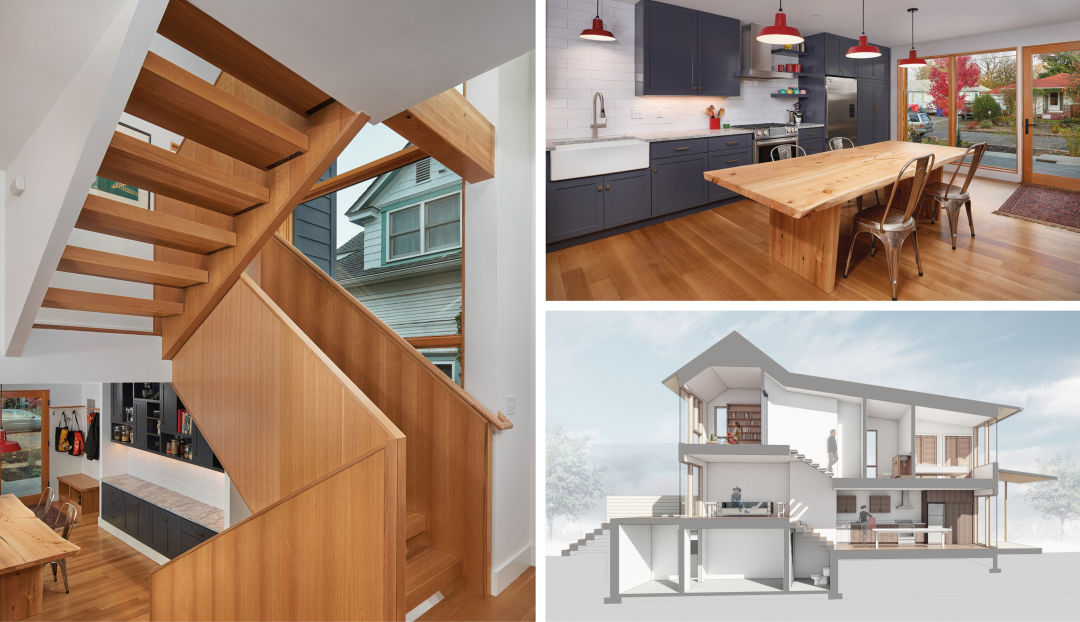A Pair of Downsizers Give the Portland ‘Skinny House’ a New Face
“Skinny houses don’t encourage demolition. Townhouses do.”

Blink and you’ll miss this slender North Portland house. When the owners wanted to downsize from their three-bedroom bungalow—without leaving their beloved neighborhood—they eyed the empty lot next door. It wasn’t really wide enough to build a house like the one they had, but what if you didn’t need a traditional home?
Completed last October, the new 1,550-square-foot “skinny” house is exactly that: long and deep, with a Z-shaped cross-section to break up space without adding walls. Zoning code is restrictive on skinny houses, explains lead designer Diana Moosman of MWA Architects, with a maximum height topping out at 24 feet, or roughly two stories. Moosman maximized space for the Reids’ house by stacking two floors atop a sunken basement, which doubles as a guest room (with a built-in Murphy bed), laundry area, and yoga workout space. A short, seven-foot-wide staircase splits the ground floor into the kitchen and living areas. To keep a sense of privacy with maximum light exposure, Moosman added a high window above the living room and made the sides mostly solid, with a few tall windows staggered so they aren’t facing the neighbors’ windows.

“It feels bigger than their old house because there aren’t as many interior walls,” says Moosman. She adds that the skinny house principle is perfect for adding living spaces without demolishing existing homes. (The owners still own the bungalow next door.) “There’s a way to create more density without just having a townhouse. Skinny houses don’t encourage demolition. Townhouses do.”
In a city where many houses built on narrow lots greet the street with nothing but a garage door and a front door, an unexpected feature is the floor-to-ceiling kitchen windows.
“We came up with the idea of the kitchen/dining room being a big farmhouse kitchen that faced the street,” says Moosman. “They’re pretty introverted folks, but I warned them, [this] is going to turn you into a party house. And sure enough, it’s made them more social people.”
View full article here at Portland Monthly
